#Adaptation and resilience from forests
Explore tagged Tumblr posts
Text
Forests do more for the climate than store and sequester carbon.

For example, they:
regulate rainfall
provide cooling benefits
protect coastal areas
provide forest products for local communities facing climatic threats
#Adaptation services from forests#Adaptation and resilience from forests#ecosystem restoration#biodiversity conservation#integrated risk mamagement#water regulation#livelihood diversification#urban climate benefits#Protection from hazards#fao forestry#FAO CLIMATE#sdg15
2 notes
·
View notes
Text
"A century of gradual reforestation across the American East and Southeast has kept the region cooler than it otherwise would have become, a new study shows.
The pioneering study of progress shows how the last 25 years of accelerated reforestation around the world might significantly pay off in the second half of the 21st century.
Using a variety of calculative methods and estimations based on satellite and temperature data from weather stations, the authors determined that forests in the eastern United States cool the land surface by 1.8 – 3.6°F annually compared to nearby grasslands and croplands, with the strongest effect seen in summer, when cooling amounts to 3.6 – 9°F.
The younger the forest, the more this cooling effect was detected, with forest trees between 20 and 40 years old offering the coolest temperatures underneath.
“The reforestation has been remarkable and we have shown this has translated into the surrounding air temperature,” Mallory Barnes, an environmental scientist at Indiana University who led the research, told The Guardian.
“Moving forward, we need to think about tree planting not just as a way to absorb carbon dioxide but also the cooling effects in adapting for climate change, to help cities be resilient against these very hot temperatures.”
The cooling of the land surface affected the air near ground level as well, with a stepwise reduction in heat linked to reductions in near-surface air temps.
“Analyses of historical land cover and air temperature trends showed that the cooling benefits of reforestation extend across the landscape,” the authors write. “Locations surrounded by reforestation were up to 1.8°F cooler than neighboring locations that did not undergo land cover change, and areas dominated by regrowing forests were associated with cooling temperature trends in much of the Eastern United States.”
By the 1930s, forest cover loss in the eastern states like the Carolinas and Mississippi had stopped, as the descendants of European settlers moved in greater and greater numbers into cities and marginal agricultural land was abandoned.
The Civilian Conservation Corps undertook large replanting efforts of forests that had been cleared, and this is believed to be what is causing the lower average temperatures observed in the study data.
However, the authors note that other causes, like more sophisticated crop irrigation and increases in airborne pollutants that block incoming sunlight, may have also contributed to the lowering of temperatures over time. They also note that tree planting might not always produce this effect, such as in the boreal zone where increases in trees are linked with increases in humidity that way raise average temperatures."
-via Good News Network, February 20, 2024
#trees#forests#reforestation#tree planting#global warming#climate change#climate crisis#american south#the south#eastern us#southern usa#conservation#meteorology#global temperature#conservation news#climate news#environment#hope#good news#hope posting#climate action#climate science#climate catastrophe#climate hope
14K notes
·
View notes
Text

⋆˙⟡ — CONSTANT AS A RIVER, PERPETUAL AS MOUNTAINS
cw: no pronouns mentioned. just pure cuteness.
High above the forest floor, Kinich perched silently in the upper branches of a towering tree, his body still and balanced like a natural extension of the canopy. Below him, the landscape unfolded into a maze of thick trees, jagged rock faces, and the distant, thunderous roar of the waterfall cascading down the mountain. The air was thick with the scent of damp leaves and fresh water, the humidity clinging onto everything.
From this height, Kinich had a clear view of the world below—a vantage point that made him feel at home, with the winds sweeping through the treetops and the sway of the branches beneath him. His tribe had long since adapted to this unforgiving landscape, where cliffs loomed, trees stretched endlessly into the sky, and the terrain was as treacherous as it was beautiful. To outsiders, this place was inhospitable. To Kinich, it was perfect.
His sharp eyes followed you, who was on the floor far below, walking with a carefree grace that stood in stark contrast to the harshness of the environment around you. You moved with ease, your steps light as if you danced along the path, humming softly to yourself. Your hair fluttered in the breeze, and every so often, you’d pause to marvel at the way the light filtered through the trees' forms above, casting intricate patterns of shadow and light across your skin.
A small smile tugged at Kinich’s lips as he watched you, hidden from view. There was something magnetic about your presence—how you could bring warmth and life to even the most untamed of places. He admired your resilience and fearlessness, your ability to thrive in a land most would shy away from. Even now, you didn’t seem at all fazed by the singular nature that surrounded you.
From above, he could see how your eyes lit up every time you discovered something new—a strange flower, the movement of a saurian group nearby, or the iridescent glitter of sunlight against the waterfall in the distance. There was a joy to the way you moved, an uninhibited energy that drew him in and made him want to stay and watch you forever.
You suddenly stopped and tilted your head upward, squinting at the towering branches as if you could feel his gaze. “Kinich?” you called out, your voice slightly playful. “I know you’re up there somewhere.”
Kinich smirked, though he didn’t move or answer right away. He stayed hidden, knowing you’d keep searching, your instincts sharp enough to sense when he was near.
Your eyes scanned the treetops, and then your smile grew wider. “Come on. Don’t make me climb all the way up there just to find you,” you complained, putting a hand on your hip. “You know I will.”
That was enough to stir Kinich into action. With the quiet grace of a true Scion of the Canopy, he leaped from the branch he was perched on, landing silently on a lower one before dropping to the ground with barely a sound. Your face lit up when you saw him, eyes sparkling with delight.
“Took you long enough,” you said, closing the distance. Your hands immediately reached for him, fingers curling around his arm as you pulled him close. “Were you watching me the whole time?”
Kinich nodded, his expression calm but the warmth in his eyes gave him away. “You’re hard to miss,” he replied, his voice low. “Especially when you’re singing all the way.”
You giggled, your hand slipping down to entwine with his. “Well, I had a feeling you’d be up there, hiding away like some elusive yumkasaurus. But you know I’ll always find you.”
Kinich tilted his head slightly, his thumb brushing across the back of your hand. “I wasn’t hiding,” he said, though there was a subtle playfulness in his tone. “I was... observing.”
You raised an eyebrow, stepping closer until you were right in front of him, bodies almost touching. “Observing, huh?” you murmured, your voice dropping to a whisper. “And did you like what you saw?”
Kinich’s eyes met yours, and for a moment, the world around him seemed to fade away—the trees, the running river, the steep cliffs. All that mattered was the warmth of your hand in his and how you looked at him, so full of life and love.
He didn’t answer with words. Instead, he leaned in, his lips brushing softly against yours in a slow and steady kiss, much like him. You responded immediately, your arms wrapping around his neck as you deepened it, your fingers gently tangling in his hair.
When you finally pulled apart, you rested your forehead against his, your breath coming in soft, warm puffs against his skin. “You don’t always have to watch from afar, you know,” you whispered, your voice laced with affection. “You can come closer.”
Kinich smiled, his hand coming up to cup the side of your face. “I’m here now,” he said softly, his voice steady as always, but with a tenderness that only you ever got to see. “I’ll always come closer when it’s you.”
.
.
a/n: oh well. i didn't intend to write to him soon but i wanted to gift myself since my birthday is coming and i've been checking his tag for updates more times i should to. come on, my fella writers, where are you?
2K notes
·
View notes
Text
Snails and slugs have always intrigued me.
There’s something oddly mesmerizing about the way they move, gliding slowly across leaves or stones, leaving a shimmering trail in their wake. Snails, with their beautifully coiled shells, seem to carry their homes on their backs, while slugs, shell-less and free, move with a kind of quiet determination. They’re like nature’s slow explorers, taking their time, unnoticed but full of life.

What I find fascinating is how different snails and slugs really are, despite often being lumped together. The shell of a snail is a marvel of design, a tiny fortress made of calcium, protecting it from the outside world. Each one is unique, with spirals and colors that seem as intricate as any work of art. Slugs, on the other hand, have to rely on their camouflage and slimy coating for protection, slipping into the shadows to avoid danger. They’re adaptable, resilient creatures, surviving in places from gardens to forests, even though they seem fragile.
For me, these humble creatures are a reminder that beauty and complexity exist in even the smallest, slowest things. Watching a snail wind its way up a plant or a slug disappear into the undergrowth is like seeing nature in slow motion, a moment of quiet in a fast-moving world. There’s something peaceful about their pace, a kind of simplicity that makes me pause and appreciate the little things around me. Snails and slugs may not be the stars of the animal kingdom, but they’re proof that there’s wonder to be found if you look closely enough.⋆。𖦹°⭒˚。⋆
115 notes
·
View notes
Text
⚠ Dead by Daylight Legacy Challenge ☠︎︎

Dead by Daylight Legacy Challenge: Survivor Edition
General Rules:
Complete all goals for each Survivor before moving to the next generation.
You obviously don't have to name your sims after the characters or play AS the characters, these are just the themes for each gen! But you can if you'd like to!
You may move on once all goals are met, or maintain them until the next heir becomes a Young Adult.
Each heir must embody the traits and roles of their corresponding Survivor, but there’s room for interpretation.
Heirs can pursue careers or hobbies that fit their Survivor's lore or personality.

Generation 1: Sable – The Survivor
Sable is resilient, resourceful, and thrives under pressure. They are the foundation of the legacy, with a natural ability to endure tough situations.
Aesthetic Colors: Dark Gray, Forest Green Traits: Brave, Handy, Athletic, Loner Careers: Firefighter, Self-Employed Inventor, Military
Goals:
Master the Handiness and Athletic skills to represent adaptability and endurance.
Build a small, rugged home as a "safe haven," then expand it as the legacy grows.
Save at least one Sim from a fire or dangerous situation (using the Firefighter career or another rescue-related event).
Form close friendships with 3 other Sims to symbolize a Survivor's group.
Have one "trial" moment: survive a house fire, robbery, or other in-game disaster.

Generation 2: Claudette – The Botanist
Claudette is empathetic and intelligent, with a passion for healing and nature.
Aesthetic Colors: Deep Green, Yellow Traits: Loves the Outdoors, Green Thumb, Genius, Nurturing Careers: Gardener, Scientist, Self-Employed Herbalist
Goals:
Master the Gardening and Science skills.
Create a large, lush garden and rely on it for most of the household’s food.
Befriend 5 Sims and offer them "help" by improving their lives (gift plants, teach skills, etc.).
Marry a Sim who shares her passion for nature or science.

Generation 3: Dwight – The Leader
Dwight starts as an underdog but grows into a capable leader.
Aesthetic Colors: Blue, White Traits: Coward, Charismatic, Workaholic, Friendly Careers: Business, Politician, Education
Goals:
Start at the bottom of a career and rise to the top (symbolizing Dwight’s leadership growth).
Build strong relationships with coworkers or group members.
Host a gathering or party every week to maintain connections.
Help one Sim improve their life significantly (e.g., turn an enemy into a friend or boost their career).

Generation 4: Meg – The Athlete
Meg is driven, fearless, and thrives in high-pressure environments.
Aesthetic Colors: Red, Black Traits: Athletic, Brave, Hot-Headed, Daredevil Careers: Athlete, Military, Acrobat
Goals:
Master the Athletic skill and win at least 5 athletic competitions (e.g., sports games or sparring matches).
Travel to a new world (representing Meg’s running background).
Woohoo in 3 unique locations to symbolize her daring personality.
Have only one child, whom Meg raises with strict discipline and encouragement.

Generation 5: Kate – The Free Spirit
Kate is an artist with a deep love for music, nature, and life.
Aesthetic Colors: Orange, Turquoise Traits: Artistic, Virtuoso, Loves the Outdoors, Charismatic Careers: Singer, Guitarist, Painter
Goals:
Master the Guitar and Painting skills.
Perform music for tips in public spaces and build a fanbase.
Live on a large lot surrounded by nature (with minimal electronics).
Adopt a stray animal as a companion.

Generation 6: Feng – The Gamer
Feng is competitive and strategic, always planning her next move.
Aesthetic Colors: Neon Purple, Black Traits: Genius, Ambitious, Technophile, Rebellious Careers: Video Game Developer, Professional Gamer, Hacker
Goals:
Master the Logic and Video Gaming skills.
Win at least 3 gaming competitions.
Befriend a Sim from each social group (Nerd, Rebel, Jock).
Never marry, but have one child via a close friend or a one-time relationship.

Generation 7: Mikaela – The Clairvoyant
Mikaela is creative and mystical, with a deep connection to storytelling and the supernatural.
Aesthetic Colors: Teal, Lavender Traits: Supernatural Fan, Bookworm, Artistic, Good Careers: Fortune Teller, Writer, Alchemist
Goals:
Master the Writing and Alchemy skills.
Write 3 best-selling novels, with at least one in the Mystery or Fantasy genre.
Own and frequently use a crystal ball (Fortune Teller career or just for roleplay).
Befriend at least 3 Supernatural Sims (e.g., witches, fairies, or vampires).
Host a “spooky gathering” (a costume or themed party) once per generation.
Protect and support other Sims by creating and gifting elixirs.
PLEASE TAG ME IF YOU DO THIS CHALLENGE I WOULD LOVEEEE TO SEE IT! (also pls dont judge this IS a work in progress!)
#sims3cc#the sims 3#sims 3#sims 3 screenshots#sims 3 gameplay#sims 3 legacy#sims 3 simblr#ts3cc#4t3 conversion#sims 3 build#sims legacy#sims legacy challenge#sims 3 challenge#dead by daylight#dead by daylight challenge
60 notes
·
View notes
Text
WIP Thursday
Halsin x Fem!Reader
“You remind me of a willow tree,” Halsin said, his deep voice cutting through the noise in your mind. “Strong, but flexible. A willow bends in the fiercest storms to withstand it but never breaks. It sways with the wind, rooted deeply in the earth, steady and enduring. You are like that---resilient. Even when the world presses against you, you bend, you adapt. But your roots remain strong.”
His thumb brushed over your cheeks, wiping your tears gently. His voice was quiet, but filled with warmth. You found yourself unable to tear your gaze away from him as he speaks, your mind stilling to his gentle tone.
“And yet, like the willow, there is a softness to you, a grace. The way you move, the way you face life’s challenges with quiet strength… it reminds me of the branches that gently sweep the ground, giving shelter and peace to those who need it.”
He paused, his eyes meeting yours as he gathered you against his chest, cradling you like a mere babe.
“But you are also like the forest,” he continued, his tone shifting as though he were speaking of something sacred. Perhaps it was sacred to him. Perhaps you were sacred. “Vast, full of life, ever-changing.” He said, standing with you as though you weighed nothing. “There is a wildness to you. Something untamed and beautiful. The forest does not seek to control or be controlled; it simply exists in harmony with itself, with all its seasons and cycles. Like the forest, you have a depth that cannot be easily understood---mysteries, strength, and a wild spirit that draws others in. You are captivating.”
He pressed his forehead to yours, green eyes filled with sincerity. “In the forest, there is peace, but there is also power. You hold both within you. Like the trees that grow tall and proud, and the earth that nourishes all, you are a source of strength for others, even when you don’t see it.” His voice was barely over a whisper. This was meant for your ears only, to soothe your mind alone. “And like the forest, you are ever-growing. You change with the seasons of your life, becoming something new, something more, while still holding the essence of who you are.”
Halsin’s gaze lingered on you, as if he saw not just your present self, but the many versions of you that had come before and those still to come. “You are the willow---graceful, strong. And you are the forest---wild, deep, and full of life. Both are beautiful, in their own ways, just as you are,” he said softly. “You are far more complex than the drunks of this city like to think, and more beautiful than the sun filtering through autumn leaves.”
You heard everything he told you and everything he didn’t. You heard him say that you were worth more than just your beauty and your body. You were worth more than what they made you out to be. And you knew now. You knew he could see you for what you truly were. For what you always had been.
#bg3#baldur's gate 3#baldurs gate 3#bg3 halsin#halsin#bg3 tav#daddy halsin#bg3 romance#halsin bg3#halsin fic#halsin x reader#halsin x tav#halsin x oc#halsin x you#halsin x reader fanfiction#halsin x y/n#halsin fluff#halsin angst#halsin silverbough#halsin fanfic#halsin fanfiction#halsin x female tav#halsin x fem!reader#halsin x female reader#halsin x fem!tav#halsin x fem!reader fanfiction#bear daddy#taylor’s a yapper 🗣️#wip thursday#current wip
116 notes
·
View notes
Text
hot take nobody wanted to hear but: snow white is one of the bravest disney characters because she has one of the most beautifully rendered and visually eloquent panic attacks in the history of animation (the trees suddenly have faces, the logs are crocodiles, the branches are skeletal hands) and grounds herself in the middle of a clearing by connecting with nature and singing that "everything is in tune" around her, she finds peace and clarity and picks herself back up to continue journeying through the forest regardless of her doomed situation
the creative decision of having snow white sing "remember you're the one who can fill the world with sunshine" and get herself back up was a pivotal change in the adaptation from fairy tale to screen and of snow white's characterization, and the fact that people dunk on an 87 year old movie's narrative decisions as if it had been made yesterday only proves the resilience of old school animation and good storytelling
#luly rambles#coming out of nowhere with hot takes nobody wanted#this is what I do#snow white and the seven dwarfs#snow white#disney#fairy tales
92 notes
·
View notes
Text
A Quick Cuddle - Part 3 - Hunter
Ao3 Link
Part 1 - Wrecker - Tumblr Link & Ao3 Link
Part 2 - Tech - Tumblr Link & Ao3 Link
Part 4 - Crosshair - Tumblr Link & Ao3 Link
Summary: Hunter hugs Echo for the first time.
Words: 1107
“I’m at a loss.” Hunter leaned his chin in his hand as the rippling blue vision of Rex stared back at him. The scuffle hadn’t been the worst he’d seen his squad get into but it was shocking that Echo had thrown the first punch. However, Crosshair had been trying to get under his skin all day so maybe he shouldn’t be so surprised. Echo had seemed so… responsible before he really knew him. Now he was starting to see that the little spark in his eyes was more like a full blown forest fire of chaos and he had to work twice as hard to keep up with it. Everyone else was getting along but those two… those two were picking at each other every chance they got, arguing over the comms, throwing insults. Hell, Crosshair went too far and he deserved the left hook he got but fighting on the ship was bad for morale. When he separated them he put them in their respective time out spots where they sulked off to wallow alone, getting a few hours of peace while they thought about their actions. Crosshair was still as hard headed as ever, cold shoulder freezing even after the cool down period, but he was flabbergasted by the hot temper flaring when he approached Echo in the cockpit. The cockpit had become his hideaway on the bad days and Hunter had assumed he’d talk himself into a less foul mood by them.
Boy oh boy was he wrong.
So wrong, in fact, that when he tried to check if Echo had cooled off he got a face full of pissed off ARC trooper and barely made it out with his pride intact. That’s why he called Rex. He had to talk to someone who knew Echo better. Someone who could help.
Rex sighed. “I’ve known Echo for a long time. He’s resilient. He’ll adapt.” Like it was that easy. Hunter leaned back in his chair, running his hand over his face.
“It’s more than that. There are… more personal problems that I’m not equipped for.” Admitting it out loud wasn’t what he wanted but there was more at stake than his pride. The captain pursed his lips, thought through his words.
“Look, sometimes he just needs an ear, or a shoulder. Arguing with him will only get you backed into a corner.” Understatement. More like shoved through a wall and dangled over the edge. Hunter knew Echo was strong willed but he’d been irritable as of late. Tech said he wasn’t sleeping and had caught him sneaking up to the cockpit to relieve Wrecker of his night watches.
“I’m not really a talker, Rex.” Hunter groaned as he heard Crosshair complain to Tech, the other man snapping back at him in defense. “He won’t tell me what’s wrong. I’ve tried.”
“Then try for something more your speed, hit all the bases. Make him feel included. Joke with him. Give him a hug.” Rex shrugged, laughing when Hunter grimaced at the suggestion. Good suggestions but Hunter wasn’t feeling too confident in his place to administer that kind of solution. “He’s not a tooka. He won’t bite if you pet him wrong.” Rex tilted his head, thought better of it. “Well… he might, but it’s worth a shot.” Hunter huffed at the grin Rex shot him before waving with something closer to pity than sympathy. Begrudgingly he let Rex leave, shoving up from his seat to approach Echo who was now pacing the cockpit like a caged animal.
Something at his own speed. What was that exactly? He tried talking - awkwardly, horribly - and that just made his charge more pissed off. Trying again seemed ill advised but they couldn’t battle each other for the rest of the war. By the time he made it to the cockpit Echo looked ready for a fight, snippy and guarded and glaring like he already knew exactly what Hunter was going to say.
“I’m not going to apologize to that loud mouthed, laser brained, assh-” Hunter didn’t give Echo much of a chance to finish. He grabbed Echo by the shoulder and pulled him into a hug. The other man froze, arm held away as if he was afraid Hunter was a bomb that might go off. Still, he persisted. He patted Echo’s back a few times, squeezing just a moment longer before letting him go. Even stepping back to put respectful space between them.
Echo’s expression had fallen unreadable. His eyes blinked back at Hunter with confusion, mouth pressed into a thin line. “Why did you do that?” Apprehension had taken over his body, stiff. Still, he was a sergeant and needed to soldier on regardless of the hardship.
“You’re part of this team. That means we are here for whatever you need. I want you to know that.” Wrong thing to say.
“I can handle myself.” Echo’s nose scrunched up, confusion and annoyance morphing together. With a heavy sigh Hunter steeled himself. He was going to need a tough front to combat this mission.
“You don’t have to do it alone.” Hunter poured as much sincerity into it as he could to try an appeal to Echo’s softer side. It was there underneath all of that indignation, burrowed somewhere beneath rage and what had to be stress. It was a waiting game then. Echo ran it through his head, considering his next move. He knocked him off balance by coming in waving a white flag and now Echo was going to have to work out how to respond.
“I-” Echo looked away, shaking his head. “It hurts.” It looked like everything hit him all at once. His shoulders slumped, his face dropping from anger to pain, and suddenly that standoffishness made a lot more sense. It took a moment to realize he was talking physically. That his body was in pain and he’d had enough. Being pushed by their snippy sniper had sent him over the edge. Right as he put the pieces together Echo was stepping forward to pull Hunter into another hug, no longer frozen in space as he was the first time.
Hunter let himself hug back, let Echo lean his weight on him to take the load off. Carrying everything he had been, all alone, had to have taken it out of him. Hunter gently dug his thumb into the meat of Echo’s shoulder, hearing him hiss, and dragged it through the muscles until he found the knot that rested right next to his shoulder blade. Working out the knots wouldn’t fix anything but it was a start.
Hunter would take a start.
#echovember#echo-vember#tbb echo#echo bad batch#the bad batch#the bad batch fanfiction#tbb hunter#arc trooper echo#i genuinely think Hunter’s awkwardness is very endearing
45 notes
·
View notes
Text


dropped a new t-shirt w rawpaw for their "dreams" challenge & the dream is LANDBACK WORLDWIDE 🖤
I present to you this sigil against capitalist realism (AKA the worst idea in human history: that an earth under capitalism is the only way for humanity to function.)
a different world is not only possible - it’s hundreds of years overdue. shirt can be found HERE. 100% cotton, screenprinted in texas <3 grateful for any shares w folks you think may fw it.
decolonial symbolism breakdown & image description is below the cut~
a multipanel white illustration against a black background.
TOP L: a night flying moth with the words "LANDBACK" - reps change, fluidity, & adaptation (read up on the evolution of the peppered moth - so cool!)
TOP R: a shining blade with the words "WORLDWIDE" - a tool of farmers everywhere (the machete, Indian aruval, Filipino bolo, Afro-Caribbean panga) & global symbol of decolonialism
CENTER: a huge baobab tree with people dancing & gathering fruit underneath. its roots crush military weapons long buried underground - a tree of great spiritual significance across continental Africa & Australia, long used as gathering places, sites of shelter, abundance, and resilience in difficult climates.
BOTTOM L: flowers grow from tear gas grenades - based on Subhiyah Abu Rahma's garden, in memory of her son Bassem, unalived in 2009 when an IOF soldier launched one into his chest. bc “less than lethal” weap0ns will always be lethal in the hands of fasc1sts
BOTTOM RIGHT: a panther pushes out from a lush forest, gazing at the viewer - represents the human rights past generations have fought for, a reminder to not let down one’s guard, to never forget past struggles even if we live in relative comfort, and to never settle for anything less than total liberation. & lastly
BOTTOM CENTER: an orca sinking a yacht - because... well, I trust you get it by now.
#made nearly 3k for mutual aid in palestine with the other tee!!!#doubt I have a big chance here against the 1500+ other entries#but thought i'd try#a cut of profits will go to sudan kongo or haiti depending on how sales go just so i can pay myself a lil this time#described#shirt#art#illustration#landback#free palestine#black panther#orca#yacht#anticapitalism#design#decolonialism#solarpunk
67 notes
·
View notes
Text
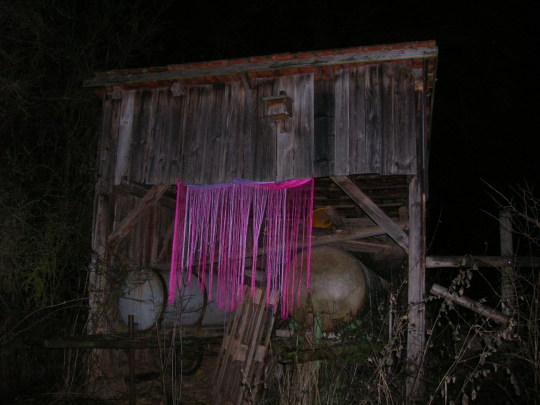
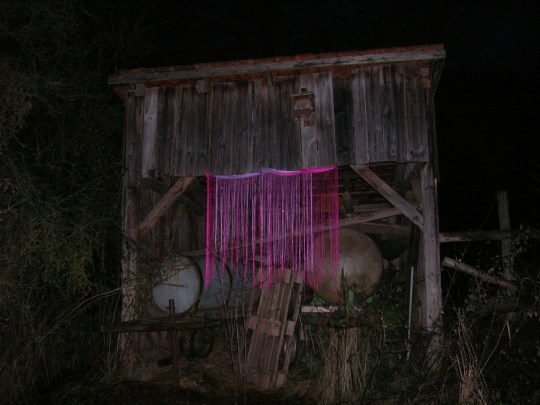
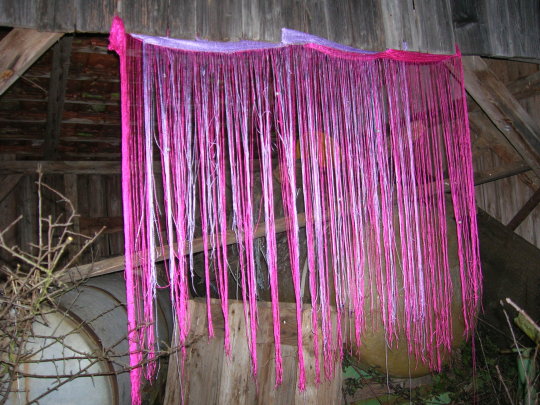
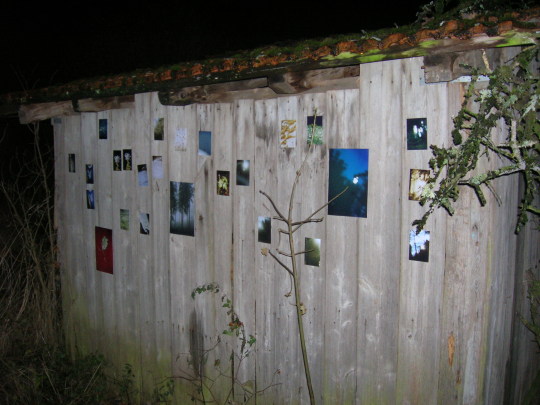
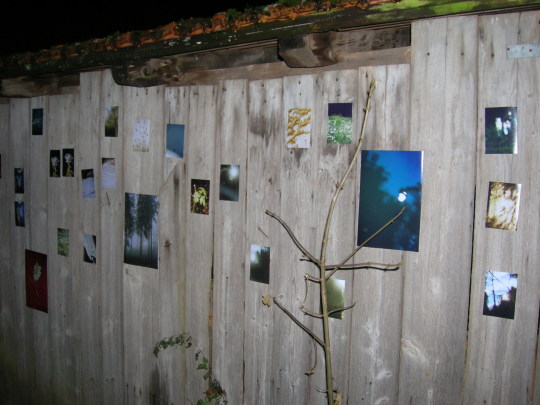
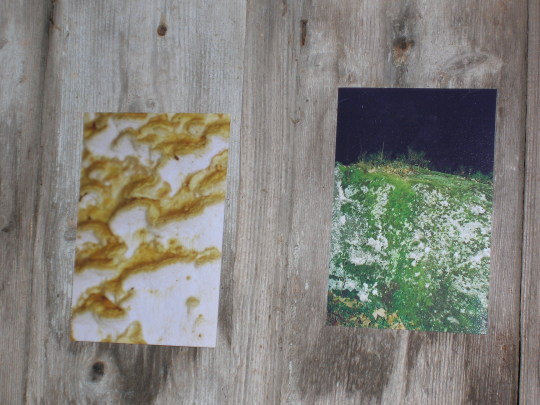
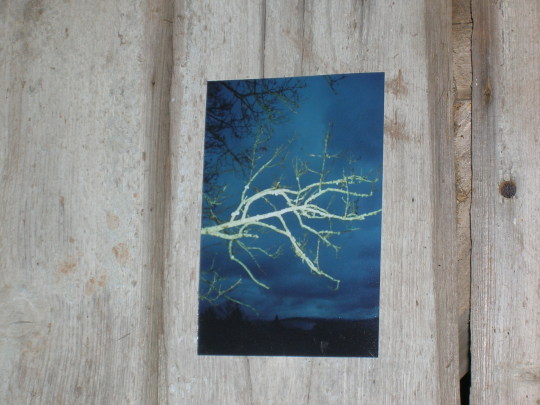
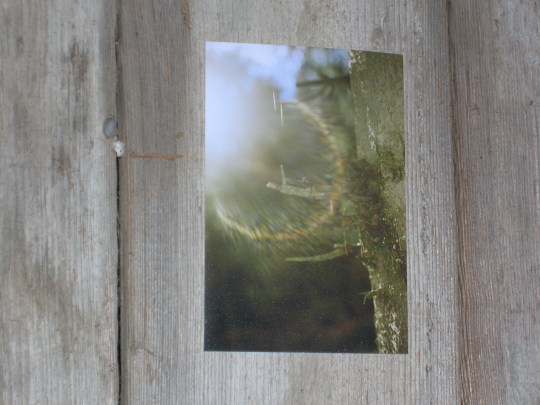
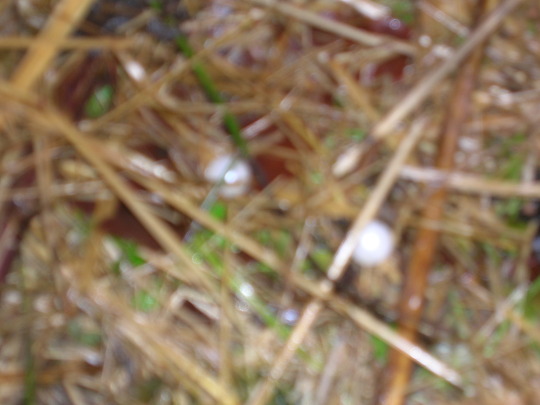
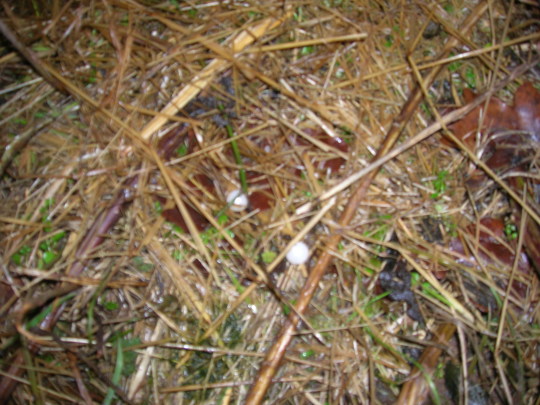

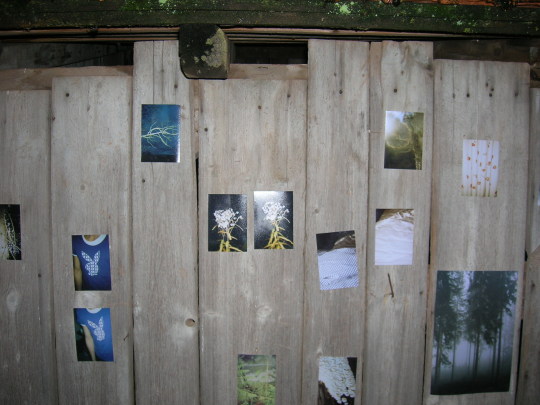
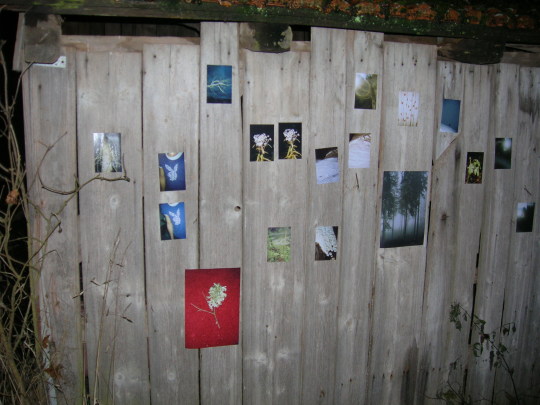

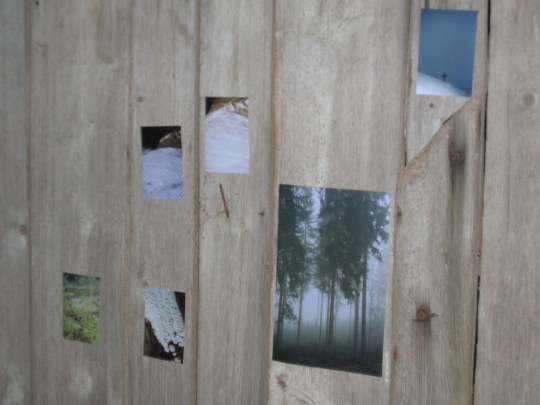
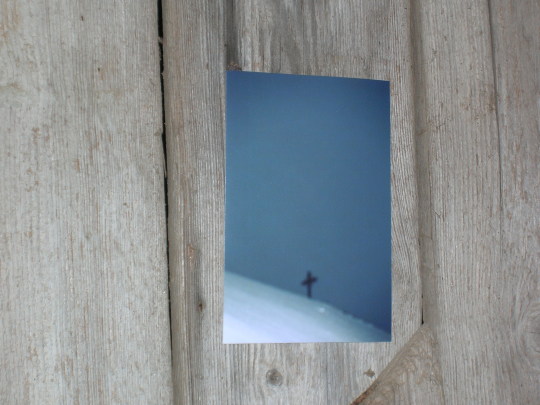
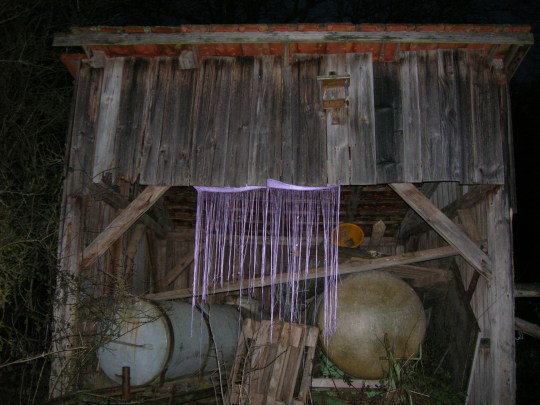
The Bavarian Forest shared its ancient magic with me, teaching me to love life as the kingfisher loves the crystal-clear bed of its stream. This forest, stretching along the border with the Czech Republic, is a treasure trove of biodiversity and a living testament to the resilience of nature. It is a place where human history and the rhythms of untouched wilderness converge. It reminds us of the strength and adaptability we need to face the future. We humans are like saplings shielded by towering treetops, like children grounded by the roots beneath us. The forest gives us all the strength we need every day to move forward – for the next generation, for everything that surrounds us, and for the greater whole. Beyond its ecological role, the Bavarian Forest has become a symbol of hope for a sustainable future. As a protected area, it demonstrates how old-growth forests can flourish when left to their own devices, offering a blueprint for what the forests of the future could look like if we let them heal and regenerate. For me, the Bavarian Forest has always been a sanctuary. In moments of feeling misunderstood or alone, the forest gave me support. It was my home without walls. And so it is for all of us: in the forest, we are never alone. Each of us walks our own path in life, just as our ancestors did eons ago. Yet, all of those paths intersect in the forest – the foundation of life and society, our shared past. For queer people, like myself, the forest also holds special significance. It is a refuge when other spaces fail to provide safety or acceptance. In rural areas, where safe spaces for LGBTQIA+ individuals are often scarce, the forest steps in to fill the void. Its sheltering canopy and vast, interconnected ecosystem offer a sense of belonging and identity that is often missing elsewhere. The Bavarian Forest, with its untamed beauty and boundless openness, becomes a place of empowerment – a reminder that there is space for everyone, even in the most unexpected corners of the world. The forest is identity, and the forest is society. It is our present, and it must be protected, because it is also our future. The Bavarian Forest, as one of Europe’s last great wildernesses, is a vital link between the past and the future. Its resilience in the face of challenges, from storms to bark beetle infestations, shows us how nature can recover if given time and space. These lessons are not just ecological but deeply societal: they teach us to value diversity, interconnectedness, and the strength that comes from nurturing what is often overlooked. The project has been exhibited twice so far – once at the Akademie Galerie on Nuremberg's main market square, and once in a public space in the countryside. The latter one was inspired by and staged as a homage to Félix González-Torres, highlighting that queer people, too, can find shelter in the forest. The Bavarian Forest, with its ancient roots and contemporary relevance, symbolizes resilience and inclusion – qualities that society must embrace to ensure a just and sustainable future. Through this, Fersenblut grew into something more than a project about nature. It became a reflection on the societal and cultural importance of the Bavarian Forest – a place that holds profound lessons about identity, resilience, and belonging. The forest reminds us of the need to protect not just its trees and wildlife, but the sense of connection it provides to all of us. This journey with Fersenblut is far from over. It has shown me what the Bavarian Forest means to me, and I hope it inspires others to reflect on what it means to them. I encourage you to ask yourself: What has the forest given you? What role does it play in your life? Once again, I extend my deepest gratitude to all who helped honor the Bavarian Forest and its meaning through this work. Together, let us continue to cherish and protect this magical place – for ourselves, for those who came before us, and for all who will follow.
See the whole story within the link below.
#soeren baptism#soerenbaptism#fersenblut#bavarian forest#bayrischer wald#urwald#primeval forest#forest core#forestcore#trees and forests
34 notes
·
View notes
Text
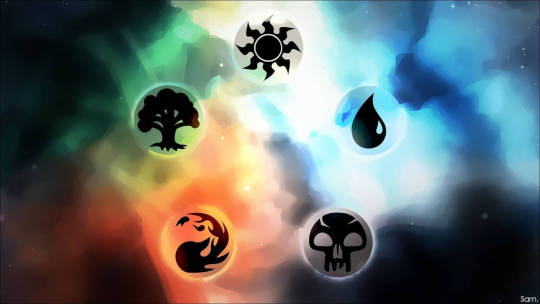
Trading Card Game Divination
One of my main ways of divination, next to the Clow cards, is Magic the Gathering. After years of trying methods like tarot, lenormand & other cartomancies I saw someone on twitch giving readings with pokemon cards. I was interested and I've been doing it ever since!
Building your deck
First you have to decide what system you will be using. Magic the Gathering? Pokémon? Lorcana? Altered? (etc) When just starting out I suggest using cards you already have. It may not be the best of the best, but you can get an idea of what you want and if you like it. My own decks have between 50 and 75 cards.
What's also a neat thing is that you can tailor TCG divination decks to your liking! You could make a theme or have 'em be nicer or meaner (I like a blunt deck, personally). You can also keep upgrading them as new sets come out. For example, my Magic the Gathering deck is a mix of Theros, Strixhaven & Wilds of Eldraine.
The Basis
Regardless of what route you take, your deck should have a base of one card of each mana type, if your tcg of choice has those. It will be the element in it's purest form like the aces in tarot. You can always take type meanings with you as cards will have one or more anyways.
A few examples:
Magic the Gathering
Plains (Positive, beginnings, good luck, life, etc)
Swamp (Negative, endings, rebirth, death, etc)
Mountain (Fire, passion, struggles, aggressive, speed, etc)
Island (Water, emotions, isolation, magic, etc)
Forest (Earth, roots, strength, growth, etc)
Pokémon
Normal (Basic, nothing, potential, mundane, etc)
Water (Emotions, fluidity, adaptable, etc)
Fire (Passion, drive, aggression, excitable, assertive, etc)
Grass (Earth, roots, growth, slow, passive, etc)
Electric (Energy, sudden, fast, shocking, irritable, etc)
Fighting (Endurance, fighting, tradition, studying, etc)
Psychic (Intuition, magic, manifestation, etc)
Dark (Unknown, unseen, struggles, shadow, negativity, etc)
Steel (Perseverance, support, willpower, etc)
Fairy (Wishes, hope, positivity, etc)
Dragon (Strength, magnanimous, divine, magnificence, etc)
Lorcana
Amber (Resilience, persistence, patience, dedication, etc)
Amethyst (Sorcery, mysticism, power, limited options, etc)
Emerald (Flexibility, adaptability, change, analytic, witty, etc)
Ruby (Courage, challenges, speed, confrontations, etc)
Sapphire (Knowledge, creativity, inventive, strategy, etc)
Steel (Strength, imposition, perseverance, mundane, etc)
There is a lot from the card itself you can take with you in your reading. Let's look at Spectacle Mage to see what.

You can use:
The cost, their attack & defense or all together (numerology)
The name of the card
The subtext of the card
The abilities of the card
The (creature)type of the card
The element(s)
The image
The setting
Pokémon cards will have attacks and stages you can take with you in your readings, next to how they act (try sites like bulbapedia). With Lorcana you can look at the stories of the disney characters, as well as the lyrics of their songs and whether they can turn into ink or not.
Now to add other cards! You want a mix & match of different themes. If you build a deck of around 50 cards I advice you have little theme overlap between the cards unless you like the nuance. My Pokémon deck has Deino & Diglett which both can mean overwhelm with the versions I have. But whereas Deino is pure overwhelm because it can't find its way nor its family, Diglett's overwhelm is because it dug out next to the sea. You dug too deep, poked your nose where you shouldn't have, said yes one too many times, etc.
Once you have a good amount of cards you can give 'em cute sleeves, practice with your deck and build up from there!

#witchblr#pop culture magic#pop culture practices#tcg divination#owomancy#pop culture witchcraft#chaos magic#pokemon#mtg#lorcana
42 notes
·
View notes
Text
"In response to last year’s record-breaking heat due to El Niño and impacts from climate change, Indigenous Zenù farmers in Colombia are trying to revive the cultivation of traditional climate-resilient seeds and agroecology systems.
One traditional farming system combines farming with fishing: locals fish during the rainy season when water levels are high, and farm during the dry season on the fertile soils left by the receding water.
Locals and ecologists say conflicts over land with surrounding plantation owners, cattle ranchers and mines are also worsening the impacts of the climate crisis.
To protect their land, the Zenù reserve, which is today surrounded by monoculture plantations, was in 2005 declared the first Colombian territory free from GMOs.
...
In the Zenù reserve, issues with the weather, climate or soil are spread by word of mouth between farmers, or on La Positiva 103.0, a community agroecology radio station. And what’s been on every farmer’s mind is last year’s record-breaking heat and droughts. Both of these were charged by the twin impacts of climate change and a newly developing El Niño, a naturally occurring warmer period that last occurred here in 2016, say climate scientists.
Experts from Colombia’s Institute of Hydrology, Meteorology and Environmental Studies say the impacts of El Niño will be felt in Colombia until April 2024, adding to farmers’ concerns. Other scientists forecast June to August may be even hotter than 2023, and the next five years could be the hottest on record. On Jan. 24, President Gustavo Petro said he will declare wildfires a natural disaster, following an increase in forest fires that scientists attribute to the effects of El Niño.
In the face of these changes, Zenù farmers are trying to revive traditional agricultural practices like ancestral seed conservation and a unique agroecology system.
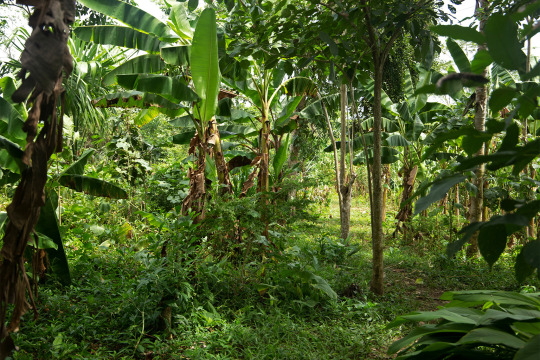
Pictured: Remberto Gil’s house is surrounded by an agroforestry system where turkeys and other animals graze under fruit trees such as maracuyá (Passiflora edulis), papaya (Carica papaya) and banana (Musa acuminata colla). Medicinal herbs like toronjil (Melissa officinalis) and tres bolas (Leonotis nepetifolia), and bushes like ají (Capsicum baccatum), yam and frijol diablito (beans) are part of the undergrowth. Image by Monica Pelliccia for Mongabay.
“Climate change is scary due to the possibility of food scarcity,” says Rodrigo Hernandez, a local authority with the Santa Isabel community. “Our ancestral seeds offer a solution as more resistant to climate change.”
Based on their experience, farmers say their ancestral seed varieties are more resistant to high temperatures compared to the imported varieties and cultivars they currently use. These ancestral varieties have adapted to the region’s ecosystem and require less water, they tell Mongabay. According to a report by local organization Grupo Semillas and development foundation SWISSAID, indigenous corn varieties like blaquito are more resistant to the heat, cariaco tolerates drought easily, and negrito is very resistant to high temperatures.
The Zenù diet still incorporates the traditional diversity of seeds, plant varieties and animals they consume, though they too are threatened by climate change: from fish recipes made from bocachico (Prochilodus magdalenae), and reptiles like the babilla or spectacled caiman (Caiman crocodilus), to different corn varieties to prepare arepas (cornmeal cakes), liquor, cheeses and soups.
“The most important challenge we have now is to save ancient species and involve new generations in ancestral practice,” says Sonia Rocha Marquez, a professor of social sciences at Sinù University in the city of Montería.
...[Despite] land scarcity, Negrete says communities are developing important projects to protect their traditional food systems. Farmers and seed custodians, like Gil, are working with the Association of Organic Agriculture and Livestock Producers (ASPROAL) and their Communitarian Seed House (Casa Comunitaria de Semillas Criollas y Nativas)...
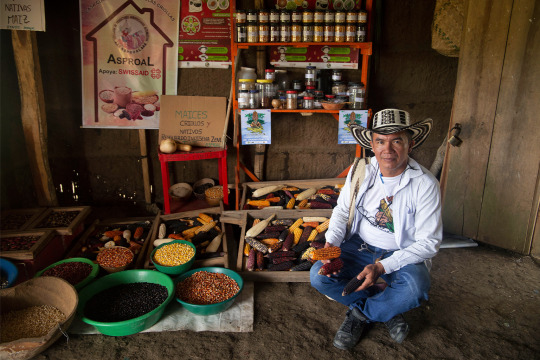
Pictured: Remberto Gil is a seed guardian and farmer who works at the Communitarian Seed House, where the ASPROL association stores 32 seeds of rare or almost extinct species. Image by Monica Pelliccia for Mongabay.
Located near Gil’s house, the seed bank hosts a rainbow of 12 corn varieties, from glistening black to blue to light pink to purple and even white. There are also jars of seeds for local varieties of beans, eggplants, pumpkins and aromatic herbs, some stored in refrigerators. All are ancient varieties shared between local families.
Outside the seed bank is a terrace where chickens and turkeys graze under an agroforestry system for farmers to emulate: local varieties of passion fruit, papaya and banana trees grow above bushes of ají peppers and beans. Traditional medicinal herbs like toronjil or lemon balm (Melissa officinalis) form part of the undergrowth.
Today, 25 families are involved in sharing, storing and commercializing the seeds of 32 rare or almost-extinct varieties.
“When I was a kid, my father brought me to the farm to participate in recovering the land,” says Nilvadys Arrieta, 56, a farmer member of ASPROAL. “Now, I still act with the same collective thinking that moves what we are doing.”
“Working together helps us to save, share more seeds, and sell at fair price [while] avoiding intermediaries and increasing families’ incomes,” Gil says. “Last year, we sold 8 million seeds to organic restaurants in Bogotà and Medellín.”
So far, the 80% of the farmers families living in the Zenù reserve participate in both the agroecology and seed revival projects, he adds."
-via Mongabay, February 6, 2024
#indigenous#ecology#agroforestry#agriculture#traditional food systems#traditional medicine#sustainable agriculture#zenu#indigenous peoples#farming#colombia#indigenous land#traditional knowledge#seeds#corn#sustainability#botany#plant biology#good news#hope#climate action#climate change#climate resilience#agroecology#food sovereignty
1K notes
·
View notes
Text
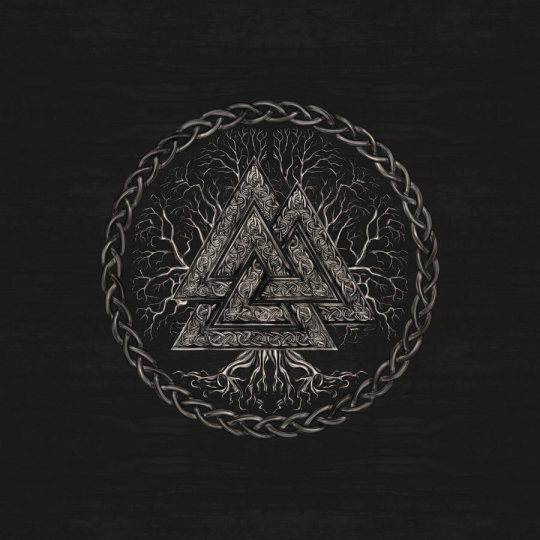

ANCIENT SCANDINAVIAN MAGICAL WORDS
alu ᚨᛚᚢ
The most common - and most, as is commonly believed, powerful - incantatory rune word. Perhaps it goes back to the most ancient northern European basis al, meaning magic power, magic in general. The magical use of the word was probably very varied. The most general interpretation is as follows - “Dedication; magical power and power; wisdom".
Several modifications of this spell are known; here are some of them: slalu - a variant supplemented by the rune of power and victory; folslalu is a complex variant known from the bracteate from Fakse; halg alu is another complicated variant, the meaning of which is restored with great difficulty.
sar ᛊᚨᚱ
Also a very common sacred word. A possible reconstruction of the meaning is “wandering in search of Power”, which should be understood not only literally, but also figuratively.
auja ᚨᚢᛃᚨ
This word itself means “luck”. The use of this word as an incantation has, accordingly, the purpose of bringing good luck.
gibulauja ᚷᛁᛒᚢᛚᚨᚢᛃᚨ
Complicated version of the previous word. This is a combination of two words meaning “to give good luck” or “to give good luck." It is important that in this version the Gebo rune appears, corresponding to the meaning of the spell as a whole.
laþu ᛚᚨᛒᚢ
A very common incantatory word; the connection of the word with an ancient stem with the meaning of “invitation”, “invocation.” This is one of the sacred words that were part of invoking spells.
laukaz ᛚᚨᚢᚲᚨᛊ
Many researchers associate this sacred word with the ancient scandal laukaz “wild onion”, which was a sacred plant and was revered as having great magical power, mainly of a protective, protective nature. Therefore, the word has a similar direction of action. However, it should be borne in mind that LaukaR is perhaps one of the oldest variants of the name of the rune Laguz, which should also be borne in mind when using this sacred word.
The names of those who practiced the Nordic Tradition also served as words of power: Erilaz - the lord of the runes; Gothi clergyman, priest; Vitki - magician, sorcerer, lord of the runes. Inscriptions - good wishes also have magical properties. The main traditional concepts are the following: Alag, "presence, influence”, Auja- “luck”, Gina- “endowed with divine power” attacks ”.
Ancient Icelandic magic words
keþa (Keþa’s) - “help of the graves” - meaning patrimonial protection
Ale - “beer, full cup” - prosperity
þaliR - “falcon, man” - courage, courage.
hararar - “agile, fast” - speed and strength
baijar - “magic” - magical power
laiþigar- “hatred, trouble” - disgusting
Halar- “stone” - resilience
viðr- “forest” -connection with nature
wiðugastir - “master” - another designation of eril
hús - “house”
ladawarija - “protected by the earth” - protection from the earth (meaning that the spirits of the earth will protect).
lönnruner- “cache of runes” - knowing the secret contained in the runes.
faikinar ist - “visited by witchcraft” - empowered
raunijar - “one who tries” - trying his hand
siklisnahli- “helping fire” - protection of the spirits of fire
teitr- “happy” -happiness, happy
elska - “love, beloved” - understanding, love.
(Adapted from L. Peschel. A Practical Guide to the Runes. St. Paul, 1996) Valknut There are numerous variations of the Valknut, although two specific configurations are by far the most common styles found. The first is the tricursal variant. This features three triangles interlocking with each other, each with their own separate shape. The second variant is unicursal, using a singular line to create the three interconnected triangles.
63 notes
·
View notes
Text
Lets talk about The Sky
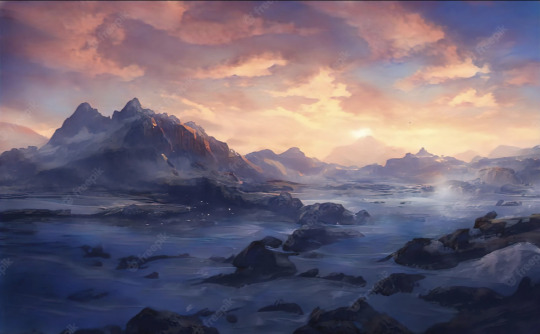
D&D is known for its exotic locales and fantastic spaces. It is fully ready to get its hands dirty digging down to the underground, the Underdark, but what about the sky above?
After a playthrough of Elden Ring I was inspired to create a “sky biome” similar to the “underground biome” of the underdark. An alien place with its own rules and logic that are different from us grounded folk. Nothing in this post needs to be canon by any means, all this is, is a theorycraft on what you could put into a sky biome in your world and how elements could work, feel free to take what you like!
To start it off here’s some things to keep in mind about living in the sky:
The Sky is Sparse. Like the open ocean there are few landmarks and guides to tell you where you are. There’s also vast, open spaces. Our sky is usually clear, your player characters aren’t often sighting floating islands or airships. This means maps of the sky biome will have broad open spaces between major points.
Difficult to Chart, Conquer. The sky biome is changing, moving, making it hard to chart and hard to conquer. Many pieces may be moving on their own over time. Maps may not always be accurate and you might need to source information to travel. You can always descend to the ground, but it takes considerable energy to land and take off.
A Resilient People. There are people dedicated to surviving some of the harshest conditions on earth. Likely anyone living in the sky is good at it, has been doing so culturally for eons, and wouldn’t want to stop just because of a few bits from land folks.
Exotic Resources. Creatures living in the sky may resort to different ways of sustenance. Sky leviathans may have forests growing on their back that give energy from the sun, cloud fortresses may harvest special plants that can only grow in their nutrient light soil. Each region may need its own way of feeding its people.
With that in mind lets check out some ways to put people in the skies!

Floating Islands are a staple in fantasy stories, from Sonic the Hedgehog to Avatar. Floating chunks of land with their own adapted flora/fauna, floating by natural or magical means. They make great places to build more traditional ground civilizations with farms, castles, towns, etc. A familiar start in an unfamiliar land. Sky islands could be subject to the moon’s pull or other celestial actions, moved as the moon moves.
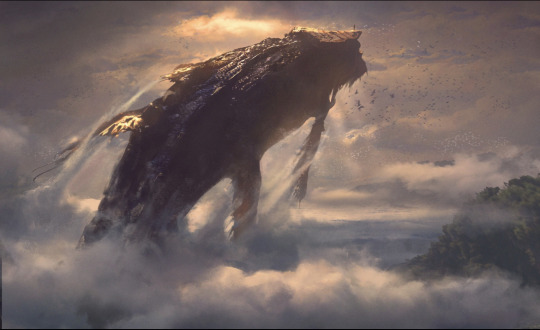
Sky leviathans! Like blue whales of the deep the sky regions may have great creatures swimming through the clouds. They may prey on flocks of birds like krill, receive energy from the sun through forests and plants growing on their backs, or be more predatory like sky sharks. You could create forest cities on their backs worshipping the sky leviathan like a diskworld turtle, or structures could be artificially constructed around the sky leviathan like some D&D cruise ship. Aboard a leviathan you’re more at the mercy of wherever it travels, along for the ride as it were.

Airships! Another classic staple of fantasy adventure. Airships as a locale in the sky could be a variety of things. They could be a singular zeppelin, some great cruiser floating through the air. They could also be a fleet or formation of airships with wire ziplines serving as transportation airship to airship. These nomadic homes can easily travel wherever they please and stock up on resources from trading posts or internal farms.

D&D is a fantastic land with dwarves and giants, so why not make a castle made of clouds? Made by cloud giants, goliaths, wizards, gods, these wispy bastions rise high as indomitable fortresses of the sky. They could be major points of control in an attempted sky war, they could be subject to weather like snow or rain.
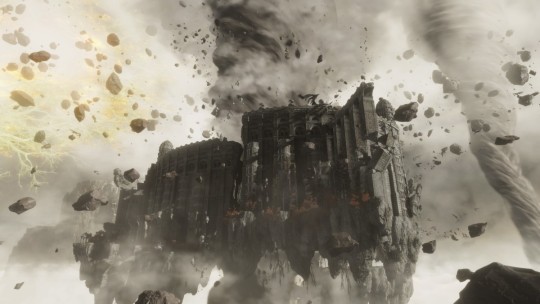
I’m making sky ruins its own category on this list, somewhere between floating islands and airships. Mysterious in origin and purpose, possibly moving on its own volition, possibly affecting the world around it with constant tornadoes or storms. Inhabitants could be ancients displaced from time, undead, constructs, or new inhabitants who don’t understand what they perch upon. This could also loop into Bioshock Infinite style constructed cities in the sky that are very much not (yet) ruined.

If we can have cave systems so deep they lead to the Underdark as a bridge from overworld to underworld why not have a bridge to the sky? Big Mountain. This is a mountain so large it moves from the overworld to the sky, a Mt Everest sized feature in the world. It should be difficult to ascend by foot but if you do you’re rewarded with a piece of the sky biome. It could be a roost for aarakocra on their migratory routes, monastery of those devoted to the winged, or even a great lair to a benevolent dragon more interested in trade than tyranny.

The last region I have for you is open sky! A no-man’s land region of the sky biome best traversed by endurance runners of fliers. Like the open ocean these are vast open spaces that could contain any number of uncharted bits of other regions or have flocks of flying creatures interacting. The open sky is defined by what it lacks and enticing for its boundless adventure. The answer is we don’t know, and by playing we discover.

And thats the sky! A region of untapped creative potential. I would love to hear other thoughts you might have for what could work as a region or landmark in the sky, or any thoughts you had reading through this! Happy exploring out there, friends!
415 notes
·
View notes
Note
hii ^^ do you have any frankie the undead headcanons?
please we starving 🥲
Hello!!!
Does Wisteria have any Frankie the undead headcanons? Why! Of course Wisteria does!
Wisteria loves the little zombie boy. Hehehe.
Frankie The Undead Headcanons:

General Headcanons
- Frankie is 23 years old, his birthday is January 18! He stands 5’7 in height.
- In Livers AU Frankie is a zalgoid, having been killed and buried in the slender forest. His body slowly took form into a zombie, clawing his way out of the dirt.
- Becoming a zalgoid transformed him into a cannibal, grew horns and a change in his left eye occurred, turning that eye white. The transformation affected his vision, being unable to see properly in that eye.
- He has no recollection of who he was or the circumstances of his death. His memories of life before being buried are completely lost—he can't remember his appearance, his parents, or any details of his past. Everything that once defined him is gone, leaving a void in his memory.
- The only thing he remembers is how to hold, aim, and shoot a gun.
- With that: he’s a sharp shooter with remarkable precision, capable of hitting targets even when they’re moving quickly. Able to adapt and take aim with incredible accuracy.
- He’s skilled with any and every gun. He can hold it for a second and he’ll immediately know how to use it.
- His favorite food is hot dogs! He doesn’t quite understand why, but whenever he eats one, all his worries seem to fade away. It’s his ultimate comfort food, bringing him a sense of joy and relief with every bite.
- Frankie is an alcoholic, he uses alcohol as an escape from his troubled past. Sometimes he heads to the bar, drinking until he gets kicked out, while other times he drowns his sorrows in his apartment.
- He smokes as another distraction as well. Or when he’s stressing about other issues. No it’s not an addiction (yes it is) he can stop whenever he want (no he can’t).
- He shares an apartment with William, but William rarely pays his half of the rent. Frankie consistently covers the full amount every month without fail. While he does hold William accountable, he understands that his roommate is a college student working minimum wage, so he doesn't push the issue too hard…not anymore anyways.
- Frankie hates when the clown visits. Mainly because he thinks they’re annoying and loud as hell. (They are).
- The two of them always end up arguing. And it’s always about stupid shit. It’s insane.
- “Where does Frankie work at to pay the rent every month??” He works at Tim Horton with William.
- Well, that’s his cover up job. Frankie’s real job is as a hit man. He takes care of any target, regardless of their status, earning a solid reputation for his efficiency and skill in crime world. In addition to his assassination work, he also sells drugs as well as selling body parts in the black market. He finds interesting ways to make extra cash…He hides all this from William. Frankie is living the double life!
- Due to his job, Frankie has made enemies in the criminal underworld who want him dead. However, being a zombie makes it harder to be killed, because it’s ultimately difficult to kill someone who's already dead. This unusual circumstance allows him to navigate dangerous situations with a level of resilience that keeps him one step ahead of his would-be assassins.
- He’s able to detach any part of his body and attach it back.
- He has stitches all over his body, mainly due to cuts that won’t heal even after he was buried and others due to the fact he’s a fighter.
- Frankie has a STRONG Brooklyn accent. It can be heard from a mile away.
- A lot of people look at him weirdly when he’s out in public…because why is he dressing up as a zombie when it’s not even Halloween? (They don’t get him.)
- He usually flips them off, cusses them off, shoots them off, or completely ignores them.

That’s unfortunately all Liver has for Frankie The Undead! (For now)
- Liver out!
#creepypasta#slender mansion#headcanon#slenderverse#frankie the undead#Frankie The Undead Headcanons#Creeps#Will write more#william grossman
11 notes
·
View notes
Text
Frostmark Campaign - Session 0 (Part 1 of 2)
System: Ironsworn, by Shawn Tomkin

When I play Ironsworn, I like to create a gazeteer of a region to explore before I jump right into play. Today, I generated information about Frostmark, where my character Aevar's adventures will take place. You are welcome to use this gazeteer for your own games.
Gazeteer: Frostmark
Location: Northern Reaches of the Ironlands, nestled between jagged mountains and frozen seas.
Area: Approximately 200 square miles of harsh terrain, spanning mountains, forests, and icy plains.
Population: About 1,500 people, scattered across isolated villages and small outposts.
Languages: Primarily Ironlander dialects, with some Old Tongue spoken by elders in rituals.
Coinage: Barter-based economy, where goods such as pelts, iron, and food are exchanged. Rarely, silver, or gold coins are used by wealthier traders.
Government Type: Decentralized clan leadership, where elders of each village hold authority. Disputes are settled through council meetings or, in some cases, trial by combat.
Industries: Hunting, mining (iron and precious metals), blacksmithing, and fishing. Due to the harsh environment, survival skills and resource gathering are central to life.
Description: Frostmark is a cold, unforgiving land where the wind howls and snow blankets the ground for most of the year. The people are hardy and resilient, used to biting cold and harsh conditions. Villages are small and sparsely connected, with trade caravans making dangerous journeys across the frozen plains to deliver goods. Massive iron-rich mountains loom over the landscape, providing the region's primary resource.
History: Frostmark's people have always been survivors, living on the fringes of the Ironlands. Originally settled by exiled clans from the warmer southern lands, they adapted to the cold and thrived, establishing strongholds in the mountains. Over time, however, raiders and wild beasts became a constant threat. Aevar's ancestors fought to protect these lands, and he carries that legacy forward.
Important Figures: Thrain, village elder of Frostmark; Ylva the Ironclad, trader; Bjorn the Ironblooded, raider chieftain.
Flora and Fauna:
Flora: Hardy conifers dominate the forests, along with shrubs and lichens. In summer, the alpine wildflowers bloom briefly. Medicinal herbs like frostwort grow in secluded glades.
Fauna: Wolves, snow elk, and frost bears roam the wilderness, while sea life like whales and seals are hunted along the coast.
#solo ttrpg#tabletop#tabletop games#tabletop roleplaying#indie ttrpg#solo games#tabletop rpgs#ironsworn
13 notes
·
View notes